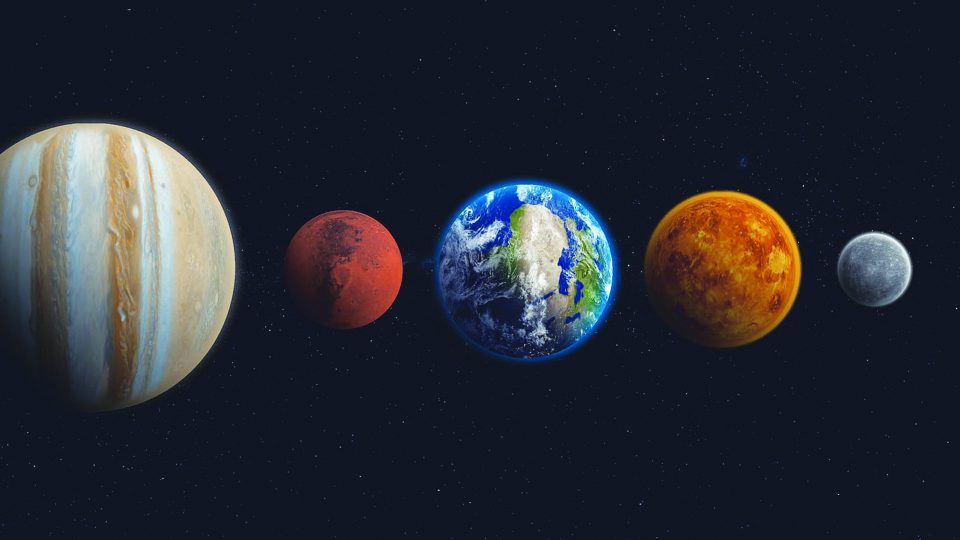© 2022, Calgary Centre of the Royal Astronomical Society of Canada
We’ve all heard the fairy tale of Goldilocks and the Three Bears, but did you know that the same analogy can be applied to Earth and its three closest siblings: Mercury, Venus, and Mars?
When our solar system formed 4.6 billion years ago, all four planets started out as equals.
Closest to the Sun, any water or atmosphere once possessed by tiny Mercury has long since boiled away (too hot).
Also lacking water, Venus never developed a magnetic field, meaning it has no protection from the Sun’s radiation. While it still has an atmosphere, it is a toxic brew of sulphuric acid and carbon dioxide which has produced a runaway greenhouse effect. With an average temperature of 462°C, Venus is hotter than Mercury, despite being further away from the Sun (way too hot).
Earth is the perfect distance from the Sun for liquid water to exist. Water is essential as it weakens surface rock, breaking the crust into movable plates which float on a semi-liquid mantle. Beneath that layer is the even hotter solid iron/nickel core and as heat radiates upward in the form of convection currents, electricity is generated which in turn creates a magnetic field which protects the Earth from harmful solar radiation (just right).
Unique to Earth, our atmosphere contains 21% oxygen: the direct result of the presence of oxygen producing life forms.
Mars had active geology in the past (Olympus Mons is the largest volcano in the solar system), but its small size meant it couldn’t retain enough heat to drive plate tectonics, thus it is now considered a dead planet, geologically speaking. Further from the Sun than Earth, any water it has is frozen. Without tectonics, it also lacks a magnetic field, and thus, has seen its atmosphere gradually stripped away by the Sun’s solar wind (too cold).










